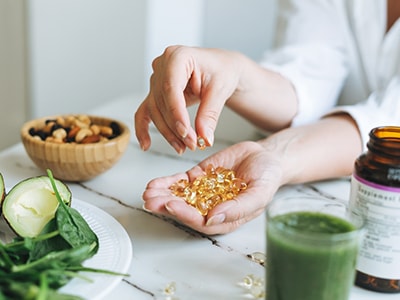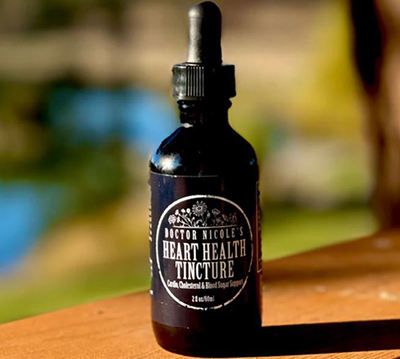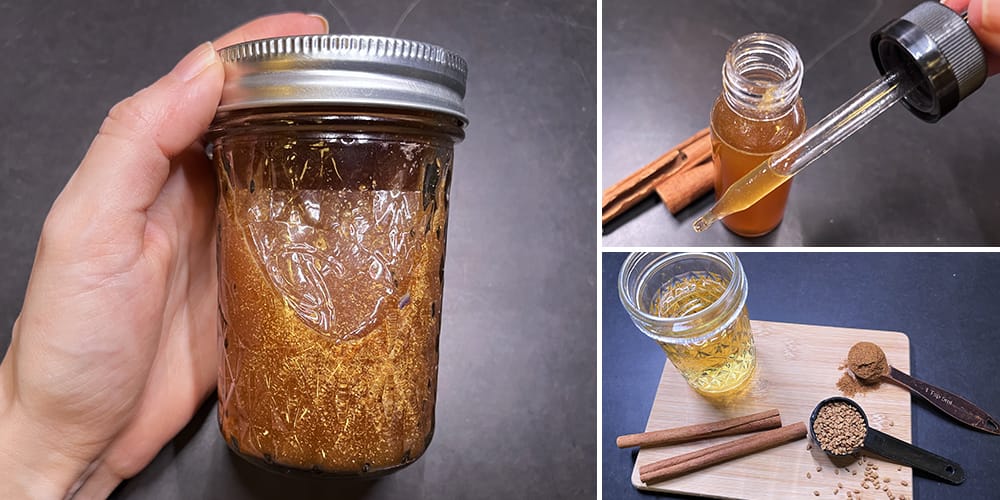
Vitamin A Toxicity: More Common Than You May Think
While most of us have heard of the symptoms of vitamin A deficiency – night blindness, coarse hair, and respiratory infections — too much vitamin A can also cause issues. This includes headaches, rashes, sleepiness, irritability, stomach pain, nausea, and vomiting. Vitamin A as retinol is teratogenic, meaning that it can cause fetal birth defects. Children and pregnant women are most at risk for symptoms associated with too much vitamin A, although toxicity can impact anyone. Below we will explore what you need to know, especially if you use supplements.
Health Benefits of Vitamin A
Needless to say, it is important to get enough vitamin A as it is crucial for brain function, immunity, vision, teeth, thyroid health, bones, and supporting the formation of hormones. For those who have chronic inflammation, vitamin A is necessary to avoid skin problems. Moreover, vitamin D and vitamin A work synergistically. It is also important for beta-cell function in the pancreas and the release of insulin. If you aren’t getting enough through diet or supplementation, there is a good chance you may be vitamin A deficient.
Which Type is Best?
As we have seen, vitamin A is essential for health. Some believe that retinol, like what you find in liver, fish and their oils, and eggs, is the most bioavailable and beneficial. This is because certain people have issues with converting the beta-carotene found in orange foods, tomatoes, and dark leafy greens into retinol. This may be why vegans can struggle with low vitamin A levels even though they are eating enough brightly colored fruits and vegetables.
Toxicity
However, we can start to run into problems if we are taking it as a supplement or prescription medication because vitamin A is fat-soluble, meaning that it isn’t easily flushed out of the system and sticks around much longer than, say B-vitamins or vitamin C. This can lead to hypervitaminosis A.
Symptoms include vision changes, bone pain, and issues with the skin, such as peeling. The condition can be acute, where it resolves once you stop ingesting large amounts of vitamin A — or it can become chronic when vitamin A accumulates over a long span of time in the body. Chronic toxicity results in liver damage and heightened pressure on your brain, which, in severe cases, can lead to drowsiness, coma, and even death. This can happen with oral acne treatments that have high levels of vitamin A, such as isotretinoin.
Dermatologists prescribing these medications typically monitor kidney and liver function in their patients during treatment to avoid problems. Precautions also need to be taken in pregnancy. Additionally, toxicity can be seen when people use mega doses of vitamin A supplements or if taking multiple supplements that contain the vitamin.
A single high dose (over 30,000 IU for men, 23,330 for women) can result in severe headache, vomiting, vertigo, nausea, coordination issues, and blurred vision. Taking more than 10,000 IU/day that is spread out over a longer period of time can lead to diarrhea, birth defects, liver damage, headaches, and bone thinning. Smokers and former smokers, along with people who have been exposed to asbestos, should not take beta-carotene supplements as clinical trials have shown it can lead to an increased risk of lung cancer.
Having said that, toxicity is unusual if you are getting your vitamin A from food sources — with a few caveats: juicing orange vegetables and fruits, eating liver, or using fish oil products such as cod liver oil. If any of these are consumed in excessive amounts it can lead to toxicity.
The Takeaway
Vitamin A is an essential nutrient with a range of health benefits and it is clear that we need it — in the appropriate amounts. If you choose to supplement, the recommended amount for women is 2,330 IU/ day and men 3,000 IU. The upper tolerable intake for adults is no more than 10,000 IU/day. For children, consult with their healthcare practitioner as safe levels depend on age and weight. Much higher amounts of vitamin A can be tolerated if coming from food sources: between 3,000 and 18,000 IU for adults. Keep in mind if you are eating an abundance of foods rich in vitamin A, you will need to adjust your supplementation of this nutrient accordingly to avoid toxicity.
Herbal Support: Vision, Inflammation, Blood Sugar Control
If you need extra support beyond vitamin A for eye health, reducing inflammation, or blood sugar control, several herbal remedies can help. These include hawthorn, fenugreek, tulsi (holy basil), and bilberry, which are found in my Heart Health Blend.
Hawthorn lowers blood pressure, decreases triglycerides and cholesterol, and reduces inflammation, while fenugreek and tulsi are outstanding for regulating blood sugar levels. Both also address inflammation. Bilberry is one of the best herbs you can take for vision and eye health due to the high level of antioxidants called anthocyanins. What’s more, it helps to regulate cholesterol levels, supports liver and kidney function, and lowers blood sugar levels.
You can learn more about my Heart Health Blend and many other plant-based herbal medicines by visiting the apothecary today!












My understanding is that an IU (liquid) measurement is about equivalent to a (dry) milligram powder or dry pill measurement; excepting that IU measures are balanced with the viscosity of blood (and especially when multiple liquid products are fed into veins in the same IV tube (because each medicine or vitamin may have a different viscosity). Milligram measures are typically exact; but IU measures are not always exact, because they may need to be shorted to not increase the viscosity (it is sort of like the thickness of a liquid material) of the blood stream. So you may prefer a thick broth or a thin broth (the difference is in the broth’s viscosity). It would be a lot easier for everyone in America to address measures of vitamins in the same “language” we read on a box in a pharmacy or grocery store. For pills and many capsules holding dry substances, the measure is milligrams. Please feel free to correct me if I am mistaken in my own research to clarify the difference between IU and Mg (but if you do correct me, then I would prefer to read articles that give both measures (IU and Mg), or in America, just Milligram equivalencies. Thanks
radar again. It occurred to me that an IU measure (of a liquid–of which foods ARE SORT OF A LIQUID, sort of; and in that “there is juice” in natural foods. So it may well be that an IU is the proper designation of amount of a substance in foods. That thought had never occurred to me before reading your article. Beyond that I have never taken Vitamin A as a liquid, but I have certainly eaten food.
Do you agree with the basic concept, as a generality, that IU is about equivalent to milligrams?
I am asking because sometimes I eat a lot of carrots, as an example, in one sitting. I have no idea how many IU’s of any vitamin might be in a carrot, nor any other vegetable. But I do recognize milligrams because all my supplements are measured with that measure.
Nicole, you are probably correct in using IUs for foods. Still IU alone as the only measurement of amounts does not register with me. Just saying.
Especially if the bottle of supplements is measured in mcg instead of milligrams or IU.